Share the post "What Soccer Balls Are Filled With (Air/Helium)"
Today, many people don’t actually know what soccer balls are made of. This has caused fans around the world to wonder, are soccer balls filled with helium?
As this question seems to be on the minds of soccer supporters from across the globe, we decided to take a look.
Throughout the piece, we cover topics such as:
- Whether or not soccer balls are filled with helium
- FIFA match grade balls
- If professional soccer balls are different from non-professional balls
- What materials soccer balls are made from
This article uncovers the truth behind the helium soccer myth and explores what exactly goes into the making of a soccer ball. Is helium the key to perfecting your freekick routine? Let’s see.
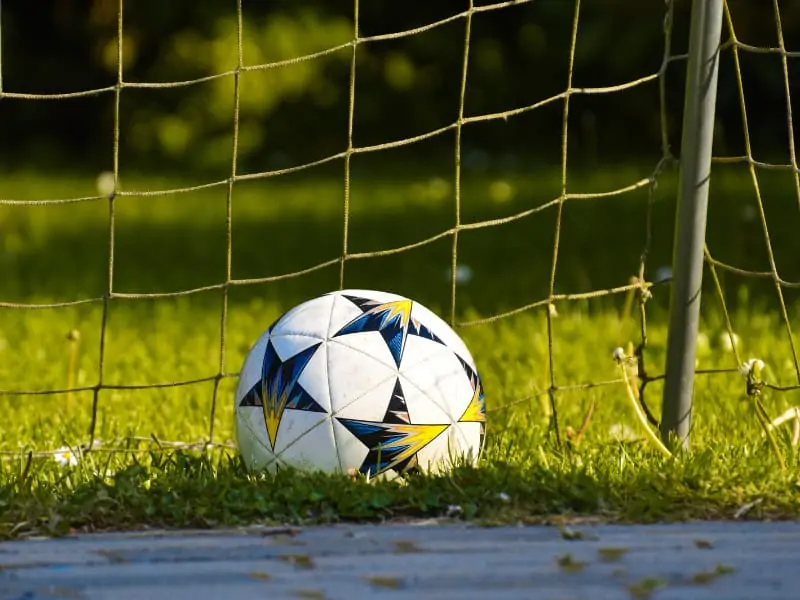
Are Soccer Balls Filled With Helium?
Soccer balls are not filled with helium. In fact, they are not filled with any special gas at all. They are pumped full of the same regular air that we breathe every day.
Observing the pace, power, height, and speed that soccer balls move at, it’s no surprise that some casual fans believe they are filled with helium, which is much lighter than air.
Although there appears to be an old rumor floating around the internet that helium is the main gas that fills soccer balls, it is untrue.
The reason that soccer balls move in unusual ways, like bending, dipping, and curling, is more to do with the way players strike the ball.
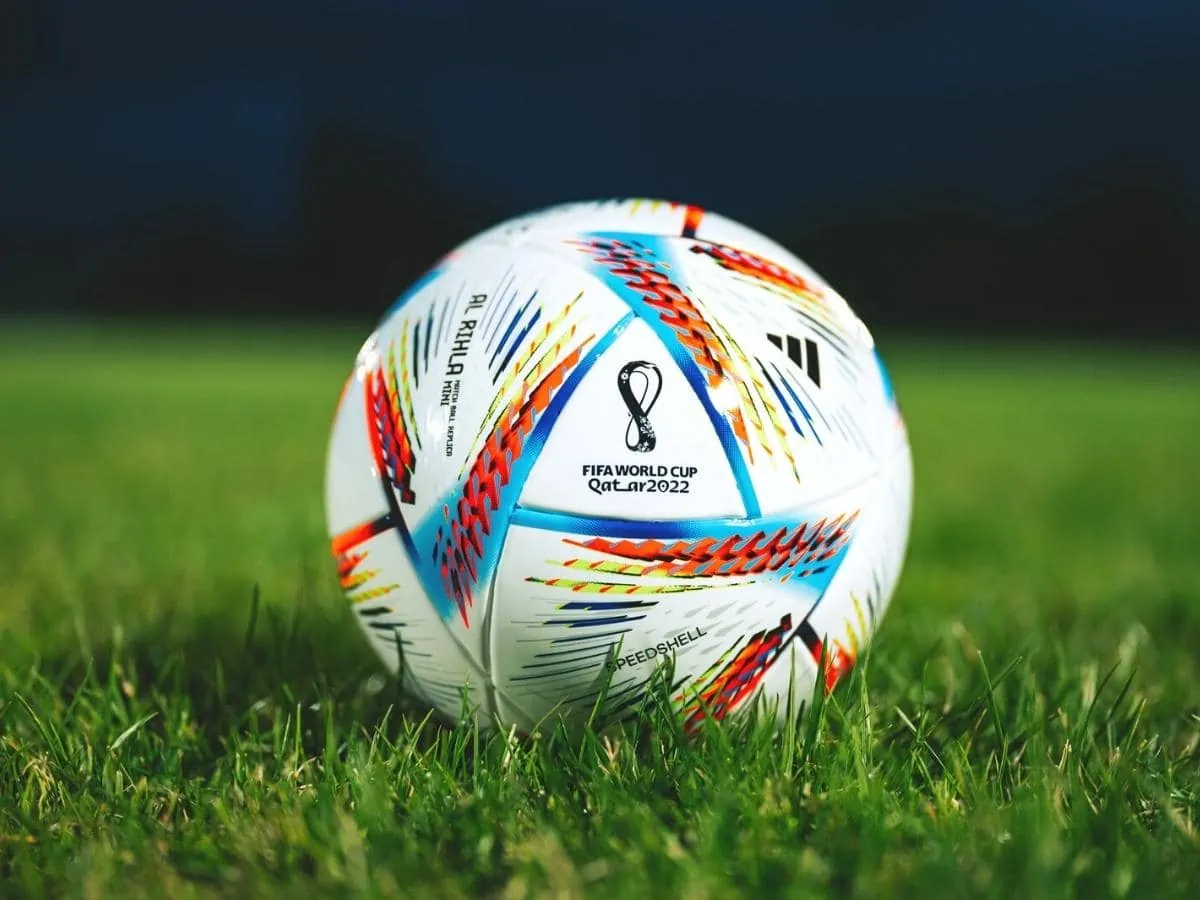
Modern Soccer Ball Materials
Years of practice in the backyard and on the training field, plus a little sprinkle of natural talent, means players have masterful control over the trajectory of the ball.
The materials and stitch patterns of modern soccer balls also influence how they move.
Some balls used in recent tournaments have caused controversy because of the way they can be manipulated. Before the 2010 World Cup, legendary Italian goalkeeper, Gigi Buffon expressed concerns over the tournament balls:
“The trajectory is really unpredictable. Usually you get used to it, but in this case every touch comes with the unknown.”
Gianluigi Buffon, 2010.
It is unlikely that any soccer balls are filled with different types of gases at amateur or professional levels for the simple reason that it is highly impractical.
Soccer balls can be easily inflated with a hand pump. Filling them with other gasses would be more costly, difficult, and in some cases, dangerous.
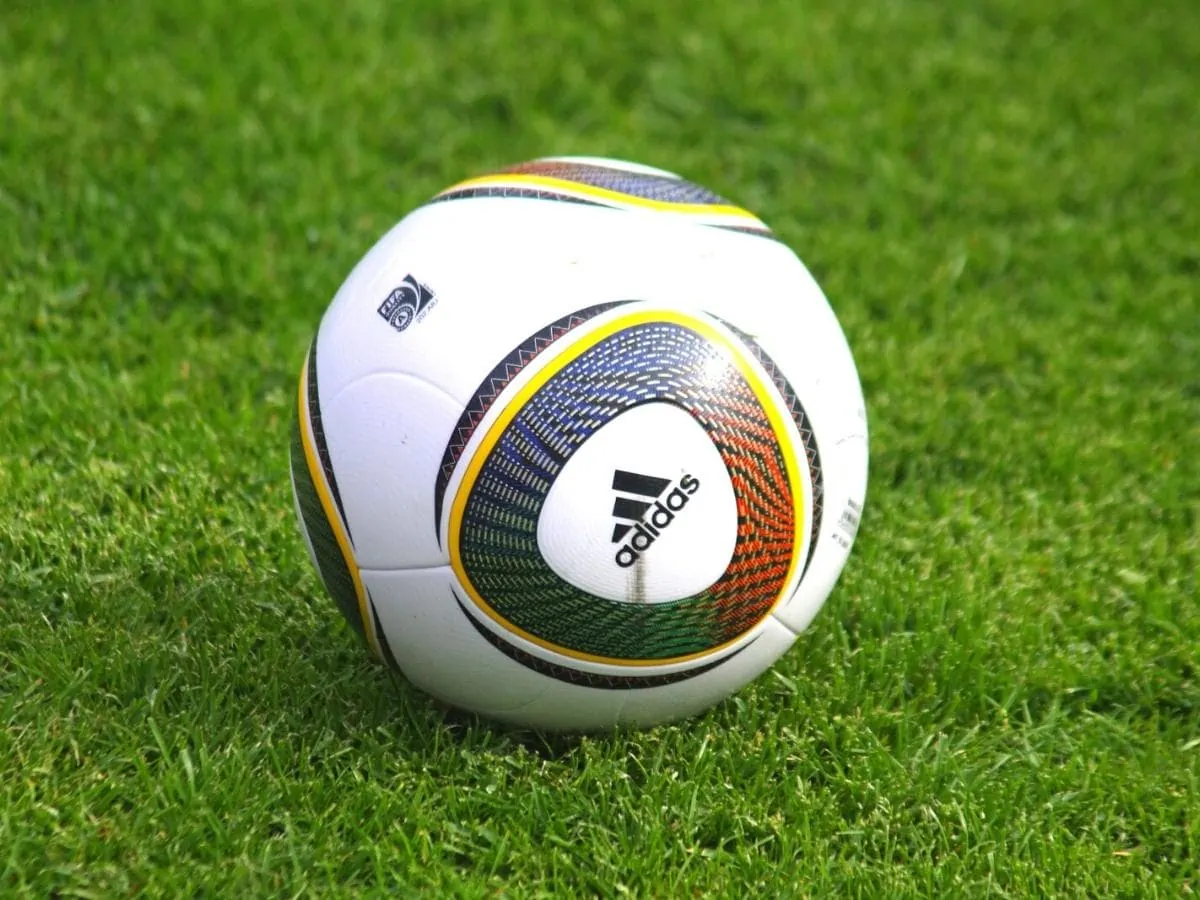
What Happens If Soccer Balls Are Filled With Helium?
If you’re still skeptical as to whether or not helium is used to fill soccer balls, let’s take a look at what would happen if they were. This theory has been well researched as it appears to be a major topic of interest for soccer fans, at least in the online sphere.
So, is helium the best-kept secret in professional soccer?
Here’s the thing. While helium-inflated balloons rise and float away in the wind, the same can’t be said for helium-filled soccer balls.
You see, helium is lighter than air, so when lightweight balloons are pumped full of this gas, the combined weight of the helium plus the balloon material is generally still lighter than the air that was displaced, so the balloon goes up.
Compared to the material that a soccer ball is made from, the weight of the gas inside it is a lot less, meaning the ball doesn’t hang in the air or float in any way.
The weight of the materials is far greater than the air displacement, meaning helium inside a soccer ball is actually negligible.
Technically speaking, helium does have a different effect on soccer balls to air. However, the extent of these effects is so minimal that you wouldn’t notice it during a soccer game.
Still skeptical? Check out this video that tests the difference between helium and regular air-filled balls to see for yourself.
After testing helium and regular air-filled soccer balls, there was little to no difference in terms of how high they could be kicked, ease of juggling, shot power, as well as free-kick power, movement, and accuracy.
Another reason helium isn’t used to inflate soccer balls is its rate of deflation. As helium molecules are smaller than those found in normal air, they escape much faster, causing your ball to deflate faster.
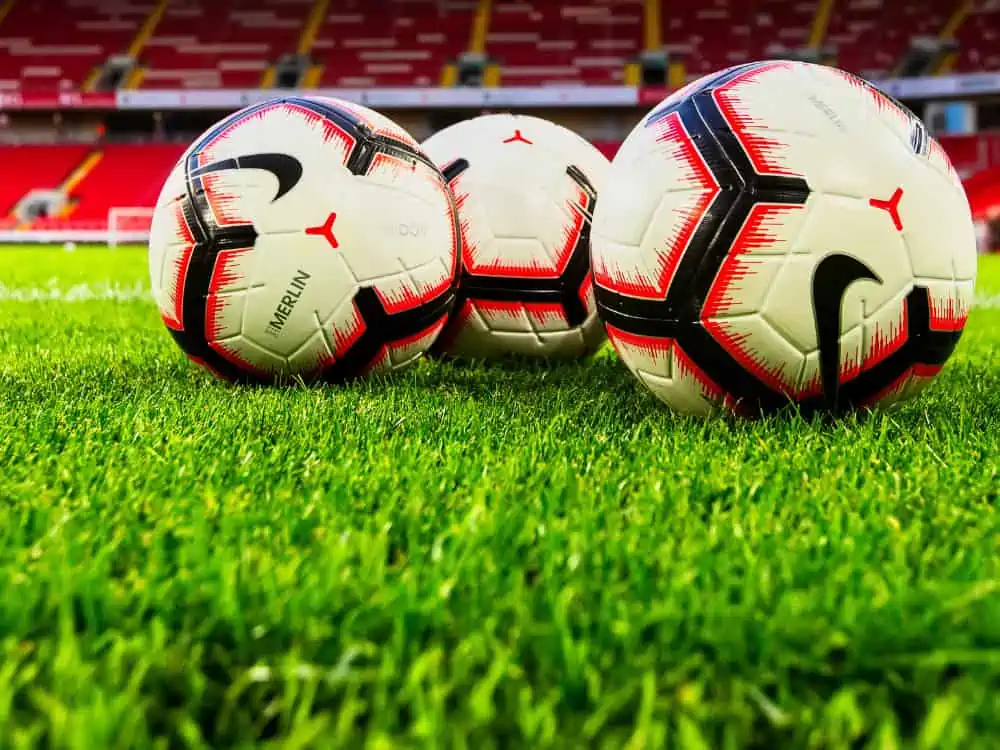
What Are FIFA Balls Filled With?
Interestingly, FIFA doesn’t have a rule stating that soccer balls must be filled with regular air. Neither FIFA nor the International Football Association Board (IFAB) addresses the type of gas that official soccer balls must be inflated with.
Perhaps this has added fuel to the rumor that helium was used for soccer balls. However, if we look a little closer at the rules, we’ll see exactly why helium isn’t used.
Although it isn’t explicitly banned, the chemical makeup of helium doesn’t fit pressure regulations for soccer balls, meaning a helium-filled ball would not meet gameday standards.
What Air Pressure Is In a Soccer Ball?
All official, professional-level soccer balls must be inflated to a pressure equal to 0.6 – 1.1 bars (600 – 1,100g/cm²) at sea level (8.5 lbs/sq inch – 15.6 lbs/sq inch). In other words, a pressure range that helium simply doesn’t fit.
Soccer balls should be carefully checked before every game to ensure they are correctly pressurized.
FIFA regulated balls are awarded one of three quality standard badges as part of the globally recognized FIFA Quality Programme. The three quality levels are:
- FIFA Quality Pro
- FIFA Quality
- IMS (International Match Standard)
All balls must undergo rigorous testing before they receive a badge.
They must pass 7 separate tests before they can be considered for either of the top two labels. If you’re in the market for a quality soccer ball, be sure to watch out for the FIFA quality logo.
FIFA Quality Pro is the highest stamp of approval given to any ball.
Soccer balls with this level of accreditation are the gold standard and are used at the elite level of professional soccer, such as World Cup tournaments.

FIFA Ball Testing Protocols
FIFA-approved balls are tested in 7 key categories. Below, you can find these categories and what values warrant a FIFA Quality Pro award:
- Circumference – 26.97” to 27.36”.
- Roundness – max 1.5% allowance.
- Rebound – at 68°F the ball must rebound to a height between 53” and 61”. At 41°F, the ball must rebound to a height of 49”.
- Water Absorption – must not absorb 10% of the water in the test tank.
- Weight – between 14.8 oz and 15.69 oz.
- Pressure Loss – after 72 hours, it must not lose more than 20% of the gameday pressure allowance.
- Shape & Size Retention – after being shot over 2,000 times against a steel plate at 31 mph, it must have a maximum circumference increase of 0.59”, maximum sphericity deviation of 1.5%, and a maximum pressure change of 0.1 bar.
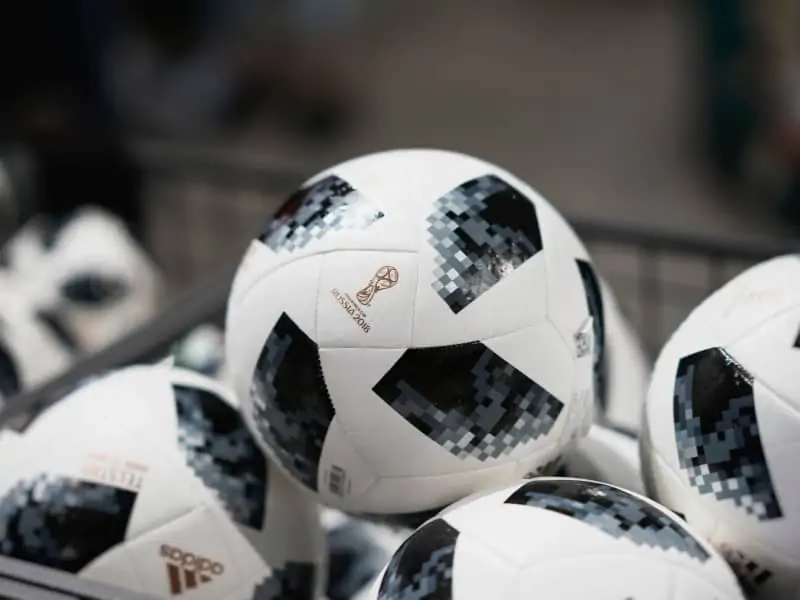
Are Professional Soccer Balls Lighter?
Professional soccer balls aren’t necessarily lighter than another standard size 5 balls. Weather conditions combined with frequent kicking can cause a ball to deflate or absorb moisture during a game, making it potentially lighter or heavier after 90 minutes.
Most full-size soccer balls manufactured by reputable brands base their designs on professional standards so they typically weigh roughly the same.
However, if they haven’t been approved by FIFA or regulated by a sports standards body, there is no guarantee they are regulation weight.
In professional soccer, different types of balls are often used for different tournaments. Each year, most competitions introduce a new game ball design.
While balls can be washed and reused for multiple games, they are inspected closely to ensure they are fit for purpose. When the season or competition ends, balls often end up in different places.
For example, they are sometimes donated to local soccer academies or schools. Other times they may be given to sports brands or a franchise’s social media team to give to fans as competition prizes.
A maximum of 7 gameday balls are used per game in the Premier League.
It is highly unlikely that reused balls are closely inspected outside the professional game. Therefore, old balls may be slightly heavier or lighter than match-grade balls depending on their condition.
What Materials Are Soccer Balls Made From?
Although there are several different styles of match balls from different brands, they are typically made using 12, 20, or 32 panels fabricated from leather, polyurethane, or PVC that conform to a spherical shape.
Modern soccer balls are complex compared to those used throughout history.
The panels are generally machine or hand-stitched or bonded using heat to help keep them intact and to reduce water absorption. The inside of soccer balls contains latex or rubber, allowing them to be pressurized with air.
The 2021 MLS gameday ball, by Adidas, is a thing of beauty, featuring the cities of all 27 teams on its panels.
Get your very own MLS official ball here.
Share the post "What Soccer Balls Are Filled With (Air/Helium)"
Joel is a seasoned soccer journalist and analyst with many years of experience in the field. Joel specializes in game analysis, player profiles, transfer news, and has a keen eye for the tactical nuances of the game. He played at various levels in the game and coached teams - he is happy to share his insight with you.



